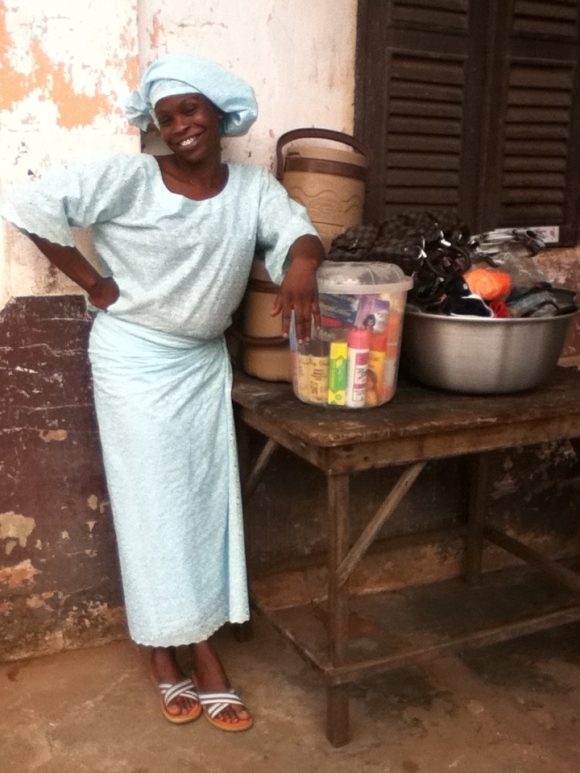By Holly Sarkissian, KF 19, Benin & Togo
In Benin, New Year’s Eve is a BIG HOLIDAY. I recently spoke with two Kiva borrowers about their plans to celebrate. Meet Flaure:

Flaure is currently saving money to celebrate the New Year. She plans to buy pagne (or colorful fabric) to make a new outfit for each member of the family. She will also celebrate by cooking a special meal and dancing with her friends and family.
Meet Romance of the Dieu Est Grand Group (God is Big Group):

Romance is looking forward to celebrating Christmas and the New Year. She plans to sell pre-made New Year’s outfits for children in order to earn additional income. During the festivities each member of her family will wear a new outfit made of pagne or colorful local fabric. They will also celebrate by eating and dancing together. Romance’s favorite dance is Zouk which originates from the Caribbean islands of Guadeloupe and Martinique and has gained popularity in francophone Africa .
In addition to Zouk, there are several other dances popular in the region. Many of the kiva borrowers in Ghana, Togo, and Benin will be celebrating the holidays with the following dances:
1. Cool Catché is a dance with origins in Togo that is very popular throughout West Africa. This dance is done by lifting one’s hand or foot in front of the body and alternating right and left to the beat of the music. There is also a version of this dance called Cool Catche Mama which involves moving the head and neck back and forth to the beat of the music. You can see both versions in this popular Togolese music video LA GRIPPE CC.
2. Azonto originates from Ghana and Nigeria and is also very popular throughout the region. It involves knee bending, hip movements, and alternating pulses of ones hand in front of the body between the legs and then up to the sky. It is said that Azonto is the dance of the spirits so in many popular versions of the dance, the dancers will wear masks to enhance the dance’s cryptic element. You can see it in this two popular songs:
3. Cutata originates from Togo and Cote d’Ivoire . This is the dance for booty dancing lovers everywhere. It involves shaking ones behind up and down very quickly. You can see some starting at minute 1:52 in this popular Togolese music video, Fo Mapelé.
4. Agbadja is a traditional rhythm originating from the Mina and Ewe ethnic groups. It comes from the southern region of Togo and the southwest region of Benin. You can see Agbadja in this video.
5. Simpa comes from the central region of Togo, originating from the Kotokoli ethnic group. You can see a performance of Simpa in this video taken in Sokodé, Togo.
6. Kamou comes from the North of Togo, originating from the Kabiyè ethinic group. You can see an example of this dance performed by the group The Seeds in their music video Lidaw.
Now you too can celebrate the New Year by dancing like a West African Kiva Borrower.
Happy Holidays!
Holly is a Kiva Fellow currently dancing with Kiva Borrowers in Togo & Benin. Find a borrower in Togo or Benin and lend today!
PREVIOUS ARTICLE
New Field Partner: Kiva expands to Thailand with Yellow Leaf Hammocks →NEXT ARTICLE
Twelve Days of Christmas from Kiva FellowsHAPPY HOLIDAYSFROM THE KIVA FELLOWS! →













